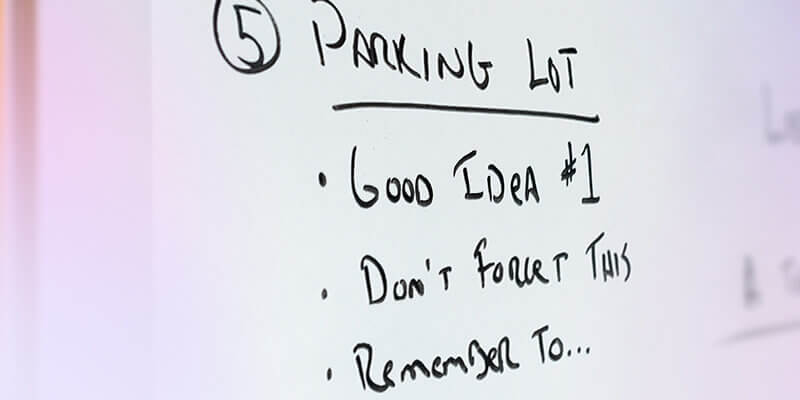We’ve all been there. You’ve just settled in to a meeting and you’ve most likely just come from another meeting. If you’re lucky, there’s a description in the calendar invite. More than likely, the meeting description will be as cryptic as ancient Egyptian hieroglyphics. No reason to worry. If there’s a whiteboard and a fresh marker handy, you have chance to save the meeting and be a hero.
Not every meeting needs a whiteboard session—but using the whiteboard effectively will make every meeting better. And it will make you look good too. If you find yourself in a meeting that doesn’t have a clear purpose and expected outcome, or if you notice things going off the rails, it’s time to grab a marker.
First, let’s talk about why you should grab that marker.
- It demonstrates confidence. It takes guts to stand up and lead a whiteboard session. But when you do, you’ll realize how the simple act of taking initiative will bolster confidence in yourself and others in you.
- It commands attention. People are trained that they should be looking at something and “following along” in most meetings. Have you ever noticed how much more comfortable some meetings get once someone flicks on the projector and displays a PowerPoint or Keynote presentation? Regardless of whether or not there is a presentation, the whiteboard will always trump the presentation when it comes to keeping people’s attention.
- It sparks contribution. Sometimes when we are navigating a complex problem to solve there is a lack of contribution. Simply getting on the whiteboard will give people a reason to contribute. Now you are writing things on the board for people to help fill-in. It’s not about the agenda any longer, it’s about you giving people a framework to contribute ideas to the meeting.
Next, let’s talk about some of the ways you can deliver a good whiteboard session.
- Start with lists. This is the most simple way to get started. Simply write a topic and use numbers or bullets to list out the items being discussed. Sure, this sounds elementary but you would be surprised how lists will accomplish all 3 of the previously mentioned reasons as to why you should get on the whiteboard.

2. Use tables and grids to help with prioritization. When there are many moving parts to a discussion, prioritization becomes critical. If you feel comfortable with drawing horizontal and vertical lines then you are in good shape to draw a table or grid like you see below. Make 3 columns and label them Items, Business Value (BV), and Level of Effort (LOE). BV and LOE should be a ranking from 1 through 5. This is a best practice that shows how you are keeping the business needs in mind with the level of work required to get the job done. Always make sure to prioritize the items with the highest business value and lowest level of effort first.

3. Draw a timeline. Whenever “when” is part of the conversation, draw a timeline. This can also be helpful when there you are trying to figure out what a flow should be or a sequence of events. There are a few different options but the most simple option is drawing a long horizontal line as you can see below.

4. Embrace circles and arrows to demonstrate a continuous cycle. This is about as hard as we’re getting for this blog. Certainly we can all feel comfortable with these two shapes. Now, we are just putting them together. Whenever the discussion is around a repeatable process or methodology, use a circle. This can help visualize the most simple process or the most complex consumer decision journeys that we map our for our clients.

5. Create a Parking Lot. Many times, great ideas and topics will come up during a meeting that aren’t relevant but you don’t want to lose them. Off to the side, create a list called “Parking Lot” to squeak in those good ideas that you want to remember for another time.

As you can see, these simple options don’t require you to be an art student from SCAD nor do you have to have the word “strategist” in your job title. But, you can draw like an art student and lead with strategy when you apply these 5 simple tactics to the whiteboard. Having these simple tactics ready and available will give you the confidence you need to start providing more strategic value to the meetings that you are in. You may find that when you do, other’s will sometimes follow your lead and join in. But, that’s ok, you made the first move and now you’re a trendsetter. Just be careful with those Venn diagrams. Those really aren’t that helpful, no matter what people tell you.
